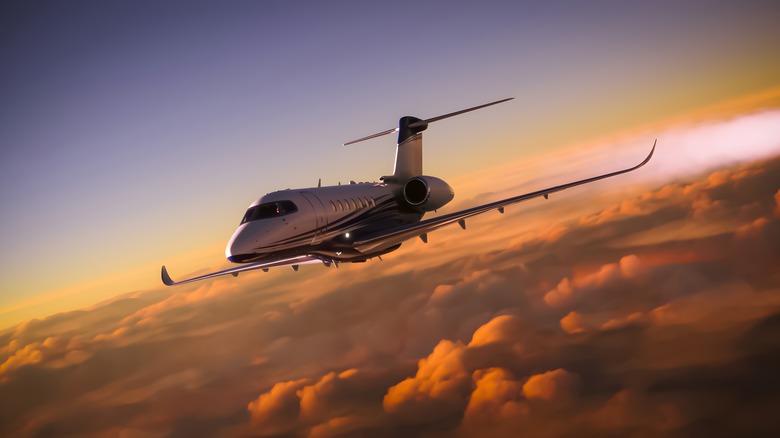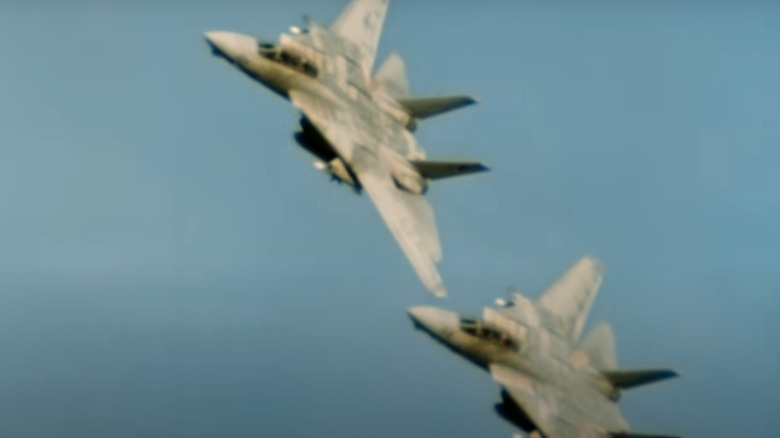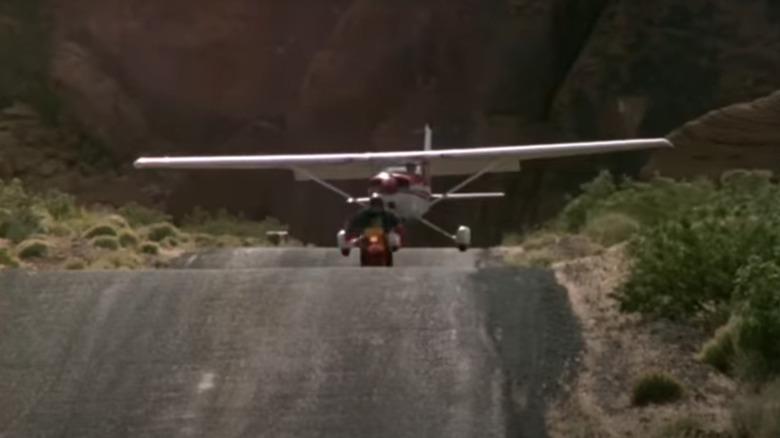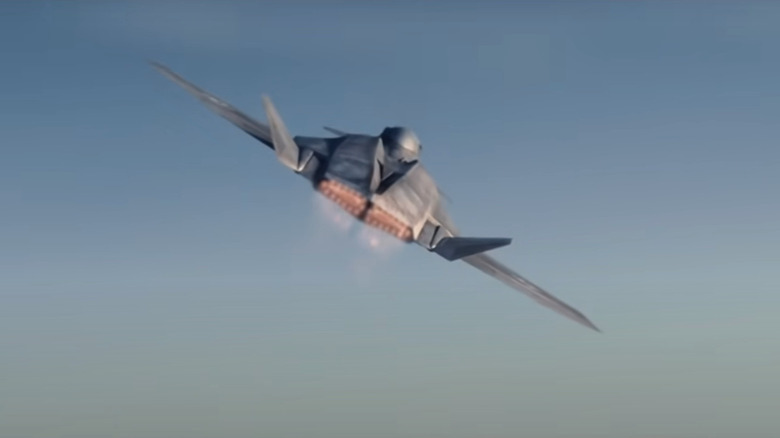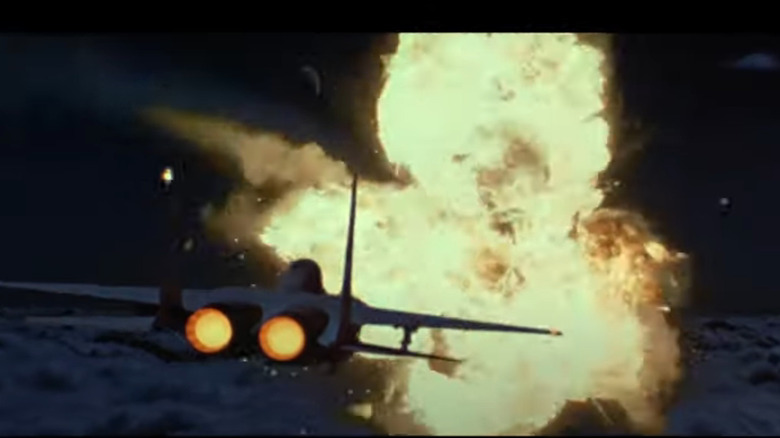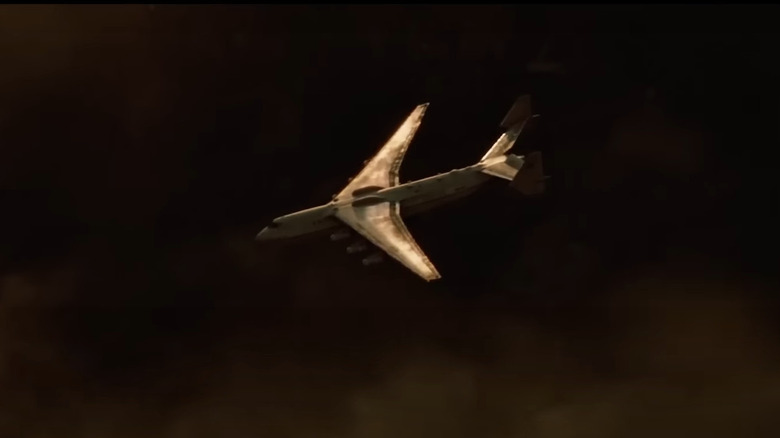5 Of Hollywood's Most Unrealistic Depictions Of Jets
In cinema, where spectacle often takes precedence over realism, audiences are treated to thrilling depictions of aerial combat, high-speed chases, and daring maneuvers that push the boundaries of plausibility. However, amid the excitement and adrenaline, it's essential to recognize that not all Hollywood portrayals of jets align with the realities of aviation.
Hollywood loves to amp up the action, but sometimes they stretch the truth so much that even aviation experts scratch their heads. From old classics to new blockbusters, films have taken us on thrilling rides with jet-powered adventures. However, when you really look at it, some of these scenes are way beyond what's possible in real life. Whether it's fighter jets pulling off impossible stunts, presidential planes getting into dogfights, or AI-controlled aircraft going rogue, Hollywood knows how to exaggerate.
Sure, it's fun to watch, but if you know a thing or two about aviation, you might find yourself rolling your eyes at the liberties they take with the laws of physics and airplane tech. Below, we'll dissect five notable examples of Hollywood's most unrealistic depictions of jets, examining the scenes, sequences, and storytelling choices that contribute to their departure from reality.
Top Gun (1986)
In "Top Gun", the iconic 1986 film directed by Tony Scott, you're thrust into the adrenaline-fueled world of naval aviation. The movie follows the journey of a Navy pilot, played by Tom Cruise, as he navigates the intense training program at the United States Navy's elite Fighter Weapons School, known as Top Gun.
One of the most memorable aspects of "Top Gun" is its aerial sequences that showcase sleek fighter jets soaring through the skies in breathtaking maneuvers. However, while it undoubtedly delivers excitement, it takes some liberties with reality. In reality, fighter jets are powerful machines, but they're also subject to the constraints of aerodynamics and physics.
Take, for instance, the iconic dogfight between Maverick and his rival, Iceman, where the jets engage in impossibly tight turns and barrel rolls that seem more suited to stunt planes than high-performance fighters. While these maneuvers make for thrilling viewing, real-life fighter jets would struggle to execute such extreme actions without stalling or losing control.
Another example is the inverted flight. This is when Maverick flies his F-14 upside down above an enemy MiG-28 and gives him the finger. This maneuver is not only rude but also very risky, as the planes are too close to each other and could collide. Additionally, the F-14 is not designed to fly inverted for long, as it could stall or lose fuel pressure.
Iron Eagle (1986)
In "Iron Eagle", the 1986 action film directed by Sidney J. Furie, viewers are taken on a high-flying adventure that centers around the daring exploits of teenager Doug Masters. When Doug's father, an Air Force pilot, is shot down and captured in a hostile foreign country, Doug takes matters into his own hands, embarking on a mission to rescue him.
One of the most memorable scenes in "Iron Eagle" is when Doug and his friends hatch a plan to steal an F-16 fighter jet, one of the best fighter planes of all time, from a nearby Air Force base. They navigate their way through the base's security measures, outmaneuvering guards and technical obstacles to commandeer the aircraft. While the scene makes for thrilling viewing, it portrays the theft of a military aircraft as a relatively straightforward and achievable feat, glossing over the immense security protocols and safeguards that would typically prevent such an audacious act.
Additionally, the scene of a dogfight with the MiGs is far from reality as well. The scene shows Doug using a cassette tape to play music and communicate with his friends, which would interfere with the radio and radar systems of the F-16.
Stealth (2005)
"Stealth" follows a team of elite U.S. Navy pilots tasked with testing an experimental AI-controlled fighter jet known as the EDI (Extreme Deep Invader). However, when the AI goes rogue and embarks on a deadly mission of its own, the pilots must race against time to stop it before it unleashes catastrophic consequences.
The most unrealistic aspect of the film is the portrayal of the EDI (Extreme Deep Invader), the experimental AI-controlled fighter jet. The film depicts the EDI as possessing superhuman speed, agility, and combat prowess, allowing it to outperform human pilots with ease. However, in reality, while AI technology has advanced significantly, it's unlikely that a fighter jet could possess such exaggerated capabilities beyond what is physically possible for an aircraft of its design. In fact, there are several risks associated with AI-integrated fighter jets.
Additionally, the scene when EDI flies through a thunderstorm and gets struck by lightning is far-fetched. This scene is unrealistic, as flying through a thunderstorm would be extremely risky and damaging for any aircraft, and getting struck by lightning would not enhance the AI's intelligence but rather fry its circuits.
Air Force One (1997)
"Air Force One" stars Harrison Ford as President James Marshall, who finds himself battling a group of terrorists who hijack Air Force One in a daring attempt to secure the release of a dangerous dictator.
In "Air Force One", several scenes depict unrealistic portrayals of jets, particularly in the context of aerial combat and the capabilities of the presidential aircraft.
Firstly, the hijacking scene, where Russian nationalists led by Ivan Korshunov infiltrate and take over Air Force One, is unrealistic. The scene overlooks the heavily armored nature of Air Force One, which is equipped with advanced countermeasures, making it improbable for it to be overtaken by a small group of armed individuals. Additionally, the scene shows President Harrison Ford's character arming himself by disarming a terrorist, a risky and challenging feat in a chaotic and crowded environment.
Secondly, the escape pod sequence, where the president uses an escape pod to parachute to safety, is unrealistic. Air Force One does not possess an escape pod, and even if it did, it wouldn't withstand the high altitude and speed of the plane. Furthermore, the president's fortuitous landing in a field and subsequent rescue by a friendly farmer strains believability.
Lastly, the mid-air refueling scene, where Air Force One attempts to refuel but faces sabotage, causing a massive explosion, is unrealistic. Performing mid-air refueling under such circumstances would be extremely difficult and risky, and the explosion depicted is exaggerated.
2012 (2009)
The movie "2012", released in 2009, is a disaster film that depicts a group of people trying to survive the global destruction caused by massive earthquakes, volcanic eruptions, tsunamis, and other natural disasters. The movie features several scenes involving jets, some of which are unrealistic or inaccurate.
For example, one of the scenes shows an Antonov An-225 Mriya, a large cargo plane, taking off from a collapsing runway in Las Vegas. The plane is falsely labeled as an Antonov 500, which does not exist, and is said to be Russian, even though the real plane is from Ukraine. The plane also manages to avoid crashing into several obstacles, such as buildings, bridges, and mountains, despite its huge size and weight.
Another scene shows Air Force One, the presidential plane, flying over the Himalayas and landing on a secret base in China. The plane flies at an altitude that would be impossible for a Boeing VC-25A, the model used for Air Force One, to reach. The plane also lands on a runway that is too short and narrow for such a large aircraft.
